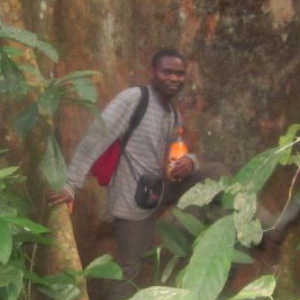Habitat loss and degradation are major factors affecting great ape populations range-wide. An effective management of human-modified landscapes is therefore crucial to their persistence and their habitats.
Many forest certification standards emphasize the implementation of conservation measures for wildlife, mainly through designing “High Conservation Value Forest (HCV)”. The concept of HCV includes several values to be considered to better conserve wildlife in production forests. However they are too general and do not clearly specify how to conserve the habitat of particular species, since critically endangered sympatric great apes and other animal species exhibit different ecological patterns and different habitat requirements.
The present study aims to determine specific areas of high conservation value for great apes in the Forest Management Unit 10-047, based on the presence and the ecological requirements of these species, in order to inform conservation planning and facilitate the development of certification criteria and indicators for the protection of great apes in logging concessions.
To achieve this study, we will conduct a great ape survey, determine plant species used for food and nest building, determine the floristic composition of different habitat types, and then classify habitat types and locate forest patches of high conservation value for great apes.
